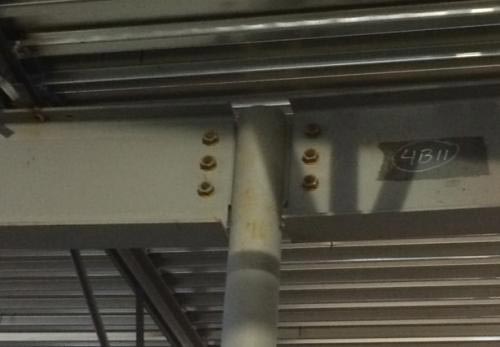Seventeen Years of Special Inspections: Where Are We Now?
By Jim D’Aloisio | Monday, October 7, 2019
When special inspections became part of the Building Code of New York State in 2002, I thought it would take a few years for the design and construction industry to adjust to the new requirement. Today many industry professionals still lack an understanding of some of the basic concepts. Because of this, special inspections have not achieved the promise of across-the-board increase in construction project quality.
The special inspections program is basically a quality assurance program in which professional people who are independent of the contractors on a project inspect and test a structure as it is being built.
One still common misunderstanding is that special inspections are limited to weld inspections and concrete slump, air, and strength tests. However, these tasks, which are performed by technicians, would not normally identify whether or not the assemblies were built in accordance with the design documents and approved shop and erection drawings. Testing reports of concrete, steel, and masonry elements may show no indication of a problem, even if the assemblies were built with significant differences or deviations from the approved construction drawings.
KHH was the special inspector for the construction of a commercial building in Binghamton when we came across the steel connection shown in the image below. The bolts were in place and snug, the clip angles’ fillet welds were smooth, all weld slag had been removed, and the connection gave all appearances of a fine, simple shear connection. However, the design documents and approved shop and erection drawings showed that the beam should be continuous over the top of the post. This resulted in a very different set of bending stresses in the beams, and we had to develop a remedial detail to provide moment continuity across the two cut ends of the beams.
Inspection of reinforced masonry is probably the most misunderstood aspect of special inspections. Grout does not need to be strength tested most of the time, since the proportion-based method is the most common way materials are specified. However, inspection of the reinforcing bars and masonry cores prior to grouting to ensure proper bar size, positioning, spacing, location, splices, and space for grout flow is critical. Unless the masonry is empirically designed, the Uniform Code requires continuous inspection every time grout is placed to ensure proper procedures for placement and consolidation per ACI/NCMA (American Concrete Institute/National Contract Management Association) requirements. On several occasions, we have encountered masons who were unaware that they should not adjust the bars after grout placement or attempt consolidation by touching a vibrator to the tops of the bars, among other misconceptions. We have also had to use infrared cameras to identify the lack of grout flow in walls and have directed contractors to open completed walls to verify the presence of reinforcing bars.
Common industry practice is to perform testing of all concrete placed on a project. However, for some elements such as slabs on grade, slump, and strength, tests are not useful indicators of the slab’s performance and durability. Having an experienced inspector on site can provide a much greater assurance of quality, as they can review the perimeter and joint details before placement, verify that the trucks’ batch tickets match the approved mix design, verify that the water/cementitious ratio (W/C) limits are not exceeded, and inspect the concrete quality and placement. Fortunately, the code gives the design engineer flexibility regarding inspection requirements of certain concrete elements for low-rise buildings, including slabs, footings, and foundation walls.
Despite its issues, improving the special inspections process does not have to be difficult. During construction progress meetings, the special inspections program – including upcoming inspection needs and any discrepancy lists – should be included as part of the regular agenda. This can help contractors remember to contact the inspection team for an operation. It can also help prevent delays in addressing identified discrepancies, which can become harder to address as construction proceeds.
The contractor or construction manager should also carefully consider their choice of special inspector. The services of a testing agency are often bid out to several parties, usually on a unit price basis, and the special inspection contract is frequently awarded to the lowest-priced firms. While bidding out technical testing services is reasonable, consistently selecting the lowest-priced inspector is not. As with all professionals, the levels of service vary. A competent inspection professional may not have the lowest unit price, but will, in many cases, prove to be more cost effective in identifying and resolving construction problems quickly and efficiently.
The goal of a special inspection program is to increase the quality of construction. The success of a special inspection program can be marked by open communication and a courteous feedback process.
Jim D’Aloisio is a Principal at KHH and leads the company’s Special Inspections program.

Steel connection example


